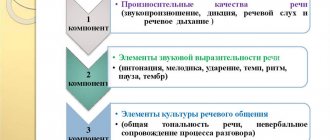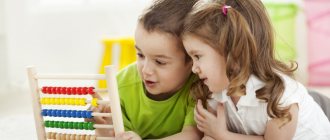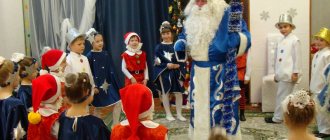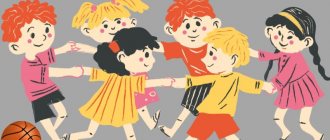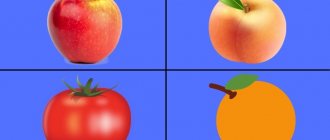Card index of didactic games, game situations for the development of communication skills
"Polite words"
Goal: developing respect in communication, the habit of using polite words.
The game is played with a ball in a circle. Children throw a ball to each other, saying polite words. Say only the words of greeting (hello, good afternoon, hello, we are glad to see you, we are glad to meet you); gratitude (thank you, thank you, please be kind); apology (sorry, pardon, sorry, sorry); farewells (goodbye, see you later, good night).
"Magic bouquet of flowers"
Goal: Learn to show attention to others, establish friendly relationships, notice the positive qualities of others and express this in words, give compliments.
Equipment: Green fabric or cardboard, cut out petals for each child.
Teacher (points to a piece of cloth lying on the floor). This is a green meadow. What is your mood when you look at this clearing?
Children. Sad, sad, boring.
Educator. What do you think is missing from it?
Children. Colors.
Educator. Not a fun life in such a clearing. This is how it is between people: life without respect and attention turns out gloomy, gray and sad. Would you like to please each other now? Let's play "Compliments".
Children take turns taking one petal at a time, complimenting anyone their age and laying it out in the clearing. Kind words should be said to every child.
Educator. Look guys, what beautiful flowers have grown from your words in this clearing. What's your mood now?
Children. Cheerful, happy.
The teacher thus leads to the idea that we need to be more attentive to each other and say good words.
"Games-situations"
Goal: to develop the ability to enter into a conversation, exchange feelings, experiences, emotionally and meaningfully express your thoughts using facial expressions and pantomime.
Children are asked to role-play a number of situations:
- Two boys quarreled - make up between them.
- If you really want to play with the same toy as one of the guys in your group, ask him.
- You found a weak, tortured kitten on the street - take pity on it.
- You really offended your friend - try to ask him for forgiveness, make peace with him.
- You came to a new group - meet the children and tell us about yourself.
- You lost your car - go up to the children and ask if they have seen it.
- You come to the library - ask the librarian for a book you are interested in.
- The guys are playing an interesting game - ask the guys to accept you. What will you do if they don't want to accept you?
- Children are playing, one child does not have a toy - share with him.
- The child is crying - calm him down.
- If you can't tie your shoelace, ask a friend to help you.
- Guests have come to you - introduce them to your parents, show them your room and your toys.
- You come home from a walk hungry - what do you tell your mom or grandma?
- The children are having breakfast. Vitya took a piece of bread and rolled it into a ball. Looking around so that no one would notice, he threw it and hit Fedya in the eye. Fedya grabbed his eye and screamed. – What can you say about Vitya’s behavior? How should you handle bread? Can we say that Vitya was joking?
"Rug of Reconciliation"
Goal: To develop communication skills and the ability to resolve conflicts.
Coming from a walk, the teacher tells the children that two boys had a fight on the street today. Invites opponents to sit opposite each other on the “Rug of Reconciliation” in order to find out the cause of the discord and find a way to peacefully resolve the problem. This game is also used when discussing “How to share a toy.”
“Draw a proverb”
Goal: to develop the ability to use non-verbal means of communication.
Children are invited to depict a proverb using gestures and facial expressions:
“The word is not a sparrow - it will fly out and you won’t catch it”
“Tell me who your friend is and I’ll tell you who you are.”
“If you don’t have a friend, look for it, but if you find it, take care.”
“As it comes around, so it will respond”
"Talking Through Glass"
Goal: to develop the skill of facial expressions and gestures.
Children stand opposite each other and perform the game exercise “Through the Glass”. They need to imagine that there is thick glass between them, it does not allow sound to pass through. One group of children will need to be shown (for example, “You forgot to put on your hat,” “I’m cold,” “I’m thirsty...”) and the other group will have to guess what they saw.
"Press conference"
Goal: to develop the ability to politely answer interlocutors’ questions, formulate a response briefly and correctly; develop speech skills.
All children in the group participate in a press conference on any topic (for example: “Your day off”, “Excursion to the zoo”, “Friend’s birthday”, “At the circus”, etc.). One of the participants in the press conference, the “guest” (the one who will be asked all the questions), sits in the center and answers any questions from the children.
"Understand me"
Goal: to develop the ability to navigate people’s role positions and communicative situations.
The child comes forward and comes up with a speech of 4-5 sentences. Children must guess who is speaking (tour guide, journalist, teacher, literary character) and in what situation such words are possible. For example, “And then everyone went to the starting line. 5,4,3,2,! – start! (The situation is a competition between athletes, says the sports commentator).
"Without a mask"
Goal: develop the ability to share your feelings, experiences, mood with friends.
Before the game starts, the teacher tells the children how important it is to be honest, open and frank towards their loved ones and comrades.
All participants sit in a circle. Children, without preparation, continue the statement started by the teacher. Here is the approximate content of unfinished sentences:
“What I really want is...”;
“I especially don’t like it when...”;
“Once I was very frightened by the fact that...”;
“I remember an incident when I felt unbearably ashamed. I…".
"Mirror"
This game can be played alone with a child or with several children. The child looks in the “mirror”, which repeats all his movements, gestures, and facial expressions. The “mirror” can be a parent or another child. You can portray not yourself, but someone else, “Mirror” must guess, then switch roles. Play helps the child open up, feel more free and relaxed.
"Film Reel"
Goal: development of non-verbal means of communication, memory development.
Number of players: group (6-7 people).
Description of the game: children sit in a circle and create a movie “from the first word.” The first child comes up with a word, the second must repeat it and add one of his own words, the third must repeat the first two words and say his own, the fourth must repeat the first three words and say the fourth, etc. When all the children have said what they want, they must show the film with with the help of plasticity and facial expressions.
Comment: Instead of showing a movie, the game can end with composing a fairy tale or story using the suggested words. If an adult sets the task of muscular emancipation of children, development of the ability to convey their feelings and experiences non-verbally (facial expressions and pantomime), then it is better to use the first option for ending the game.
"Interview"
Goal: development of communication skills, active vocabulary, ability to enter into dialogue.
Number of players: 3 or more people.
Necessary equipment: chair.
Description of the game: children choose a leader, and then, imagining that they are adults, take turns standing on a chair and answering the questions that the leader will ask them. The presenter asks the child to introduce himself by name and patronymic, talk about where and who he works for, whether he has children, what hobbies he has, etc.
Comment: at the first stages of the game, children often find it difficult to select questions. In this case, the adult takes on the role of leader, offering the children a sample dialogue. Questions can concern anything, but you must remember that the conversation must be “adult”.
This game helps to get to know children who have just joined the group, as well as to involve shy children in communication. If the children are still very new to each other, the rule can be changed a little: the child who caught the ball says the name of the previous player, then his own, and then (if he knows) the name of the child to whom he will throw the ball.
"Let's talk"
Goal: development of communication skills.
Number of players: 2 or more people.
Description of the game: an adult and a child (or children) play. The adult begins the game with the words: “Let's talk. I would like to become... (wizard, wolf, small). How do you think why?". The child makes an assumption and a conversation ensues. In the end, you can ask what the child would like to become, but you cannot judge his desire and you cannot insist on an answer if he does not want to admit for some reason.
Comment: this game is useful for introverted and shy people, as in a playful way it teaches the child not to be afraid of communication, and puts him in a situation where he needs to make contact.
In the initial stages, children may be reluctant to ask questions or engage in play. Then an adult should take the initiative.
Important point! In the game, the adult should be on the same level as the child, and in case of difficulties, below him.
"Glomerulus"
Goal: development of communication skills.
Number of players: group of children.
Necessary equipment: a ball of thread.
Description of the game: children sit in a semicircle. The adult stands in the center and, winding a thread around his finger, throws a ball to the child, while asking about something (what is your name, what do you love, what are you afraid of). The child catches the ball, winds the thread around his finger, answers the question and asks a question, passing the ball to the next player. If the child finds it difficult to answer, he returns the ball to the leader.
Comment: This game helps children see the common connections between them, and helps adults identify which of the children have communication difficulties. It will be useful for children who are not sociable, and it can also be used in groups of unfamiliar participants.
A child can also be chosen as the leader.
When all the participants are connected by a thread, the adult should fix their attention on the fact that all people are somewhat similar and this similarity is quite easy to find. And it's always more fun when you have friends.
"Living Picture"
Goal: development of expressiveness of movements, arbitrariness, communication skills.
Number of players: any.
Description of the game: children create a story scene and freeze. They can change their position only after the driver guesses the name of the “picture”.
Comment: despite the fact that the main goal of the game is to create a “living picture”, the emphasis in it is on developing the ability to negotiate and find a common language. This game will be especially useful for children who have difficulties in communication (conflict, aggressive, shy, withdrawn). It is better for an adult to take the position of an observer. His intervention is required only in the event of a quarrel between children.
"Skyscraper"
Goal: developing the ability to negotiate and work in a team.
Number of players: 5-6 people.
Necessary equipment: folding meter; 2-3 wooden cubes (can be of different sizes) for each child.
Description of the game: children sit in a circle, and in the center of the circle they need to build a skyscraper. Children take turns placing their cubes (one at a time). At the same time, they can discuss where it is better to put the cube so that the skyscraper does not fall. If at least one cube falls, construction begins again. An adult observing the progress of construction periodically measures the height of the building.
Comment: an adult in this game takes the place of an outside observer. He can intervene in the course of the game only if an unconstructive conflict arises. Children must independently try to find a common language, pursuing a game goal: to build the tallest tower possible, more or less stable.
At the end of the game, the adult can draw an analogy between the tower and teamwork, explaining to the children that friendship and the ability to come to a common decision is the basis that can keep the tower from falling and the group from falling apart.
Literature:
— Novgorodtseva E. A. Formation of friendly relationships among children in play activities // Practical journal // Teacher of preschool educational institution No. 6/2011, Moscow Sphere shopping center - p. 60.
— Chesnokova E.N. development of communication skills in older preschoolers // Practical journal // Teacher of preschool educational institution No. 9/2008, Moscow Sphere shopping center - page 126.
— Kuligina E.A., Kislyakova E.V. Communicative abilities of preschool children as a factor of social adaptation. //Practical journal// Teacher of preschool educational institution No. 5/2010, Moscow Sphere shopping center - page 61.
— Gromova E.V. Formation of communication skills with peers in older preschoolers. //Practical journal// Teacher of preschool educational institution No. 5/2010, Moscow Sphere shopping center - page 65.
— Sorokina A.I. Didactic games in kindergarten and senior groups. A manual for kindergarten teachers. Moscow "Enlightenment" 1982
— G.A. Shirokova “Development of emotions and feelings in preschool children.”
Electronic literature:
— Ilyasova E.Yu. Development of communication abilities in children of senior preschool age. https://festival.1september.ru.
— Orlova N.Yu. Development of communication abilities of preschool children in play activities. https://pedsovet.org.ru.
Card file of problem situations for preschool children
- How to see air?
- Where is the water hiding?
- Do fish breathe?
- Where can you see a dinosaur?
- How to fly to Saturn without a spaceship?
- How to bring a doll to life?
- How to fasten clothing parts without threads?
- How to wash your hands without soap?
- The robbers stole all the watches in the city. No one has any watches left. How can you keep track of the passage of time until a new clock is delivered to the city?
- Cinderella needs to leave the ball on time, and the palace clock suddenly stops, what should she do?
- Dunno injured his leg in the forest, but there is no first aid kit. What can be done?
- You need to build a snowman, but there is not enough snow, what should you do?
- Mashenka got lost in the forest and doesn’t know how to get out of the forest.
- Winnie the Pooh and Piglet decided to plant peas. They worked all day and went home happy. But the next day they noticed that birds were flying over the beds and pecking at the seeds, and at night the mice ate part of the peas. Winnie the Pooh and Piglet thought. How to preserve the pea harvest if the Scarecrow is standing, but it is already old, and the birds and mice have gotten used to it and are no longer afraid of it. Let's think with them. What to do? How can I help them? What needs to be done with the Scarecrow so that birds and mice become afraid of him?
- How to prepare breakfast for a giant?
- People always want what is not there, or what will not come soon. So in the summer, when it’s hot, we begin to remember winter. Is it possible to save a piece of winter in summer?
- One friend lives far in the South and has never seen snow. And the other one lives in the Far North, where the snow never melts. What can be done so that one can see the snow, and the other can see the grass and trees (they just don’t want to move anywhere)?
- Guests came to the bear cub. He decided to treat them to raspberries. He placed three plates on the table. We need to divide the raspberries. Help the little bear.
- Doctor Aibolit received a telegram from Africa. Animals invite him to visit. Doctor Aibolit decided to go on a trip, but does not know how to get to Africa faster. Let's help Doctor Aibolit.
- What is heavier - snow or earth?
- Cinderella wants to go to the ball, but they are only allowed in orange dresses.
- "Puss in One Boot"
The cat from the fairy tale “Puss in Boots” lost his boot. It’s uncomfortable to walk in one boot; he’s unaccustomed to walking barefoot. What should the cat do now?
- "That's the way the game is played"
Ira lost her mittens at school, she searched and searched, but could not find them, and it was very cold outside and it was far from home. How to get to it without freezing your hands?
- "Masha and the Bear"
Masha was friends with the bear and often went to visit him. Once again getting ready to visit her friend, Masha baked pies and put them in a bundle. She walked for a long time through a dense forest, accidentally caught her bundle on a bush - it tore, and the pies scattered. How can Masha bring them to the place where the bear lives?
- "Help Cinderella"
The stepmother ordered pies to be baked for dinner. How does Cinderella roll out the dough?
- "Preparation for the holiday"
The hare decided to throw a party in honor of her daughter's birthday. The highlight of the program was supposed to be cookies of various shapes. The hare went to all the stores in the area, but could not buy any cookie cutters. How can the Hare make cookies of different shapes?
- "Abstract-minded Petya"
Having decided to go on a hike, the children agreed on who would take what with them. Having packed our backpacks, we headed out of town early in the morning by train. This is the station they need. Everyone got out, the train blew its whistle and disappeared around the bend. And then it turned out that Petya, who was “famous” for his absent-mindedness, had left his backpack in the carriage. And in it there was a tent, a small shovel, a pot and matches. Everyone was very upset, except Marina, who suggested thinking and finding a way out of the situation. How to spend a night in the forest without a tent? How to do without a pot, spatula and matches?
- "Postcards for Dina"
Dina collects postcards, and her friends (she has 20 of them) decided to give her beautiful cards for her birthday. At the last moment it turned out that all the postcards were exactly the same. Dina added one of them to her collection. What to do with the remaining nineteen?
- "Little Red Riding Hood"
Little Red Riding Hood's hat is completely worn out. She asked her grandmother to sew her a new one. The grandmother fulfilled the request of her beloved granddaughter and sewed her a beautiful hat for her birthday. The granddaughter was very pleased. But the grandmother, absent-mindedly, gave her granddaughter the same hat for the New Year, March 8, and seven other holidays. The girl, in order not to upset her grandmother, took all 10 hats. But what should she do with them?
- "Help Ole"
Olya has long hair. For the New Year, mom, dad, grandmother and girlfriends gave her a lot of bright ribbons - so many that Olya couldn’t figure out what to do with them, how to use them. Help Olya solve this problem"
- “Milk problems of the cat Matroskin”
The cat Matroskin milked so much milk that he filled all the containers in the house with it. How can Matroskin use all this sea of milk?
- "Baskets for kids"
Once upon a time there lived a goat with kids. Every day the goat went to the forest and brought back a basket of grass. The basket was large and comfortable, but old. And eventually it made a hole and the grass spilled out. The goat asked the kids to weave a new basket. The kids set to work together, but soon began to quarrel: they could not divide the responsibilities among themselves. And then they decided that everyone would weave the basket themselves. And soon the goat received twenty-one baskets (!). The goat didn't know what to do with them. Help her.
- "The Wonderful Forester"
A forester lived in a pine forest. When he got bored, he collected pine cones. And he collected so many of them that they could fill an entire railway carriage. The forester did not know what to do with them. How would you use them?
- "Residents of the city of Kiselsk"
A misfortune befell the residents of Kiselsk: one fine day, all the inhabitants of the city cooked their favorite dish - jelly. There was so much of it that a “jelly” flood began in the city. Tell city residents how to use jelly.
- "Jam for Carlson"
Everyone knows that Carlson was very fond of everything sweet, especially jam. The kid constantly brought him various jams in metal jars, and Carlson immediately emptied them. As a result, Carlson accumulated a lot of empty cans. Throw them in the trash can? It's a pity. How to use them? So children solve problem situations using the algorithm proposed to them (2nd stage). Using an example of one problem situation, we will show how the algorithm is used.
- Buratiyo dropped the golden key into the swamp, but Tortilla the turtle was not nearby. This is the situation that presents itself to children. How can Pinocchio get the key? In a situation, a task or question is highlighted. Pinocchio must go under the water because he needs to get the key, but he cannot do this because it is wooden and will immediately float to the surface. Such are the contradictions of this problematic situation.
- OH and AH got ready for a hike, took canned food and bread. They arrived at the place and decided to have a snack, but it turned out that they had left the can and table openers at home. How to open a jar?
- Contradiction. OH and AH have to open a can of canned food because they are hungry and cannot do it because they have nothing to eat.
- A circus has come to town. To make adults and children aware of this, it is necessary to put up posters, but there is not a drop of glue in the city. How to put up posters?
- Contradiction. Posters need to be put up, because they will help city residents find out about the arrival of the circus; It is impossible to put up posters because there is no glue.
- Znayka asked Donut, through Dunno, to give him the recipe for delicious pies. When Donut began to tell Dunno about what was included in the recipe, they both remembered that they couldn’t write. What should I do?
- Contradiction. Dunno must give Znayka the recipe for pies, because he won’t be able to do anything without the recipe, and he can’t do it because he doesn’t know how to write.
- In the royal garden, only one rejuvenating apple ripened on the magic apple tree, but so high that the king could not reach it even with the help of a large ladder. How can the king take possession of this apple?
- Contradiction. The king must get the rejuvenating apple, because only with its help will he become younger, and he cannot, because he does not know how to do it.
- . -Galina Anatolyevna, if a flower were broken, would you be very angry? “I probably would have been angry.” Why are you asking? “And I saw how Rita broke the flower.” What can you say about Rita's action? What proverb do you know that is appropriate in this situation?
- Katya's ball rolled and hit your leg. Nikita shouted. “Can’t you see where you’re throwing the ball?” It hurts me. How would you have done it differently? What will you say to each other?
- Nika came in a new dress. Natasha saw and said loudly. - Why are you bragging? Just think, my mother bought me an even better dress. Is Natasha right in this situation?
- Sasha still hasn't learned to tie his shoelaces. Nikita is screaming in the locker room. -Ha, look, he’s going to school soon, but he doesn’t know how to tie his shoelaces. Katya silently came up and helped Sasha. Whose action is right?
- The children returned from their walk. We quickly undressed and went to the group. Andrey looked into the locker room and screamed. Galina Anatolyevna, Seryozha didn’t put his boots back in place. Galina Nikolaevna looked at Andrey reproachfully. Why ? What would you do if you were in Andrei's place?
- Children draw. Olya's pencil broke. She snatched the pencil from Rita's hands. Rita stood up and moved to another place. Why did Rita go to another table? What would you do?
- Venera Rashitovna talks to junior teacher Valentina Ivanovna. Natasha screams. Venera Rashitovna, But Olya won’t give up my doll. Then he comes up and touches the teacher’s hand. - Don’t you hear, Olya won’t give up my doll. What did Venera Rashitovna say to Natasha? A group of boys are building a castle. Alyosha came up and put the board on top. The castle fell apart. What did the boys tell him? What would you do?
- In the morning Slava played with Artem. When Roma arrived, Slava began to play with him. Artem came up and told Slava. - You are a traitor. Roma was offended. How do you think why?
- Rita and Sasha are on duty in the corner of nature. Sasha said. - Rita, let’s take the turtle to the girls, let them play with it. Rita told Galina Anatolyevna about this. Is Rita right? What would you do?
- In the dressing room, Galina Anatolyevna is talking with Artem’s mother. Rita comes up and says. - Do you know that your Artyom is the last one to get dressed? Galina Anatolyevna made a remark to Rita. What do you think Galina Anatolyevna said to Rita?
- Sveta goes into the dressing room and speaks loudly. - I'm not friends with Nika anymore. She calls me Svetka-candy. Why was Sveta offended?
- During lunch, Vitya Valentina Ivanovna offered something extra. Vitya says. - I don’t need your supplement. What would you say to Valentina Ivanovna?
- After lunch the children fell asleep. Natasha can't sleep. She constantly turns to the teacher. - Straighten the blanket for me.
- - I want to go to the toilet. “And Sasha snores loudly and bothers me.” What would you do?
- During the afternoon snack, Sasha placed a chair very close to the table. When he began to sit down, he pushed Nikita. He spilled the milk. Nikita said loudly. - What don’t you see? I don't want to sit next to you. Is Nikita right? What would you do if you were Sasha and Nikita?
- In the fairy tale "Cinderella", the stepmother and her sisters did not take Cinderella with them to the ball because they had her

